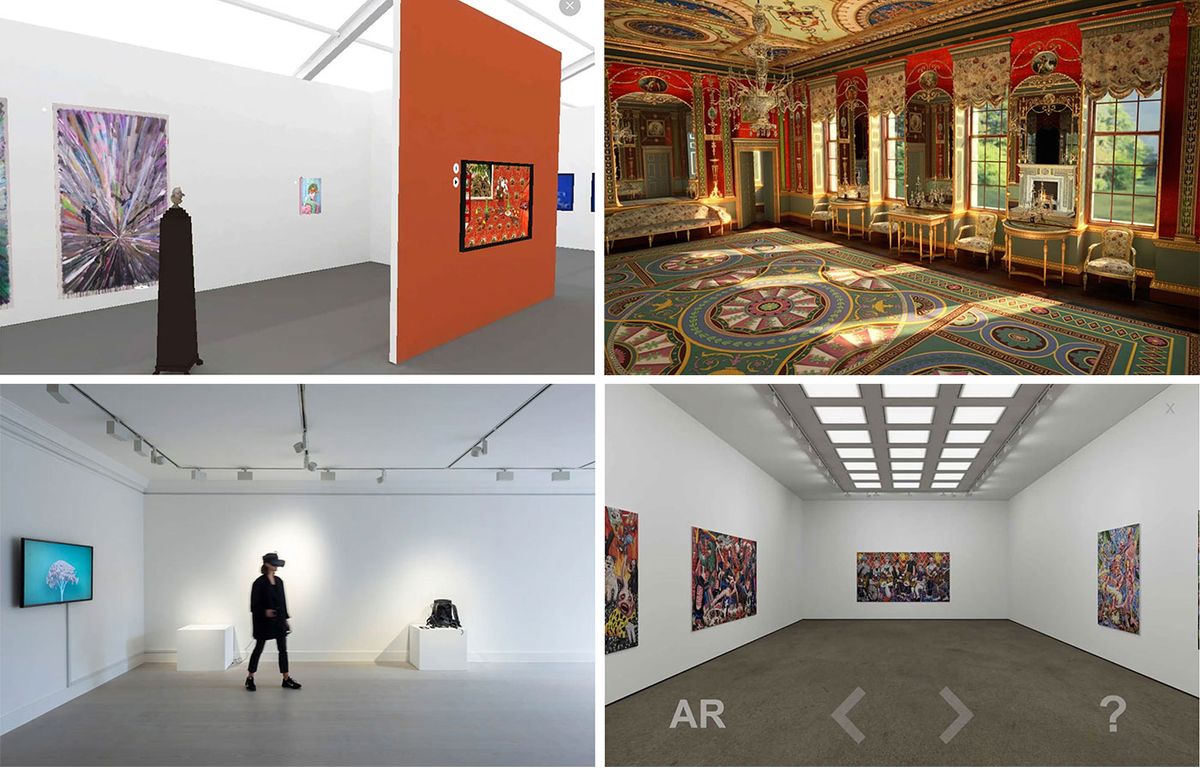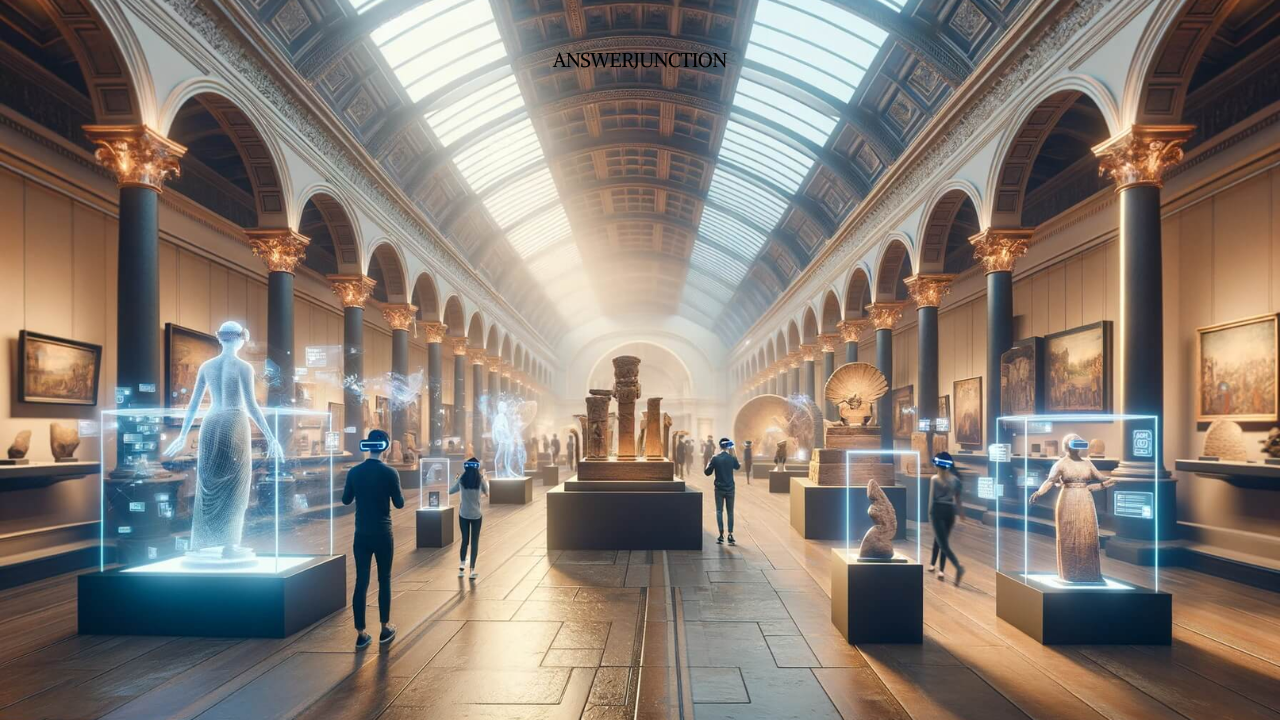Augmented Reality (AR) has transcended its initial applications in gaming and technology to emerge as a transformative force in the art world. By merging digital elements with the physical environment, AR offers a unique platform for artists, curators, and audiences alike, enabling a richer and more interactive experience with art. This article explores how augmented reality is reshaping the landscape of art beyond traditional museum settings, highlighting its applications, benefits, and the future of art engagement.
The Rise of Augmented Reality

Augmented Reality refers to the integration of digital information with the user’s environment in real time. Unlike Virtual Reality, which immerses users in a completely virtual world, AR overlays digital content onto the physical world, enhancing the way we perceive and interact with our surroundings. The rise of smartphones and tablets has made AR accessible to the masses, paving the way for its use in various fields, including art.
Artists have begun to embrace AR to expand their creative horizons. They can create digital installations that exist in conjunction with physical pieces, providing viewers with a more immersive experience. With AR, art can come to life, transforming static images into dynamic experiences that engage the audience on multiple sensory levels.
Transforming the Museum Experience
While AR’s potential is immense in various contexts, its integration into museums has been particularly noteworthy. Traditional museums often face challenges in engaging younger audiences who may find static displays uninteresting. Augmented Reality offers a solution by allowing museums to create interactive exhibits that captivate visitors. For instance, AR applications can provide additional information about artworks through visual and auditory elements, enabling a deeper understanding of the context, artist, and historical significance.
One exemplary case is the Van Gogh Museum in Amsterdam, which utilizes AR to enhance its exhibitions. Visitors can point their devices at specific paintings to unlock animations that showcase Van Gogh’s creative process or the landscapes that inspired him. This interactive layer not only enriches the visitor experience but also encourages a more profound connection with the artwork.
AR Beyond Museums: Street Art and Public Installations
The influence of augmented reality extends beyond museum walls, infiltrating public spaces and urban environments. Street artists and muralists are utilizing AR to add an extra dimension to their work. By incorporating digital elements into their physical pieces, these artists can engage audiences in ways that traditional art forms cannot.
For example, the artist Kara Walker collaborated with the AR platform Artivive to create an immersive experience in her public art installations. When viewers scan her murals with a smartphone, they unlock animations that explore themes of race, identity, and history. This approach not only deepens the narrative but also invites viewers to interact with the artwork actively.
Public installations powered by AR are becoming increasingly popular in urban areas. Projects like Kaleidoscope by Mariana Castillo Deball transform urban landscapes into interactive art experiences, inviting passersby to engage with their surroundings in novel ways. These initiatives challenge the traditional notion of art as something confined to galleries, making it accessible to a broader audience.
Educational Opportunities through Augmented Reality
Augmented Reality is also proving to be a valuable educational tool within the art world. Art institutions and educators are leveraging AR to facilitate learning experiences that promote creativity and critical thinking. Through AR applications, students can explore art history in immersive ways, gaining insights that transcend traditional textbooks.
For instance, AR can be used in art classes to provide students with real-time feedback on their work. By using AR technology, instructors can overlay digital enhancements on students’ creations, demonstrating techniques and improvements. This approach fosters an engaging learning environment, encouraging students to experiment and innovate.
Moreover, AR can enhance field trips to galleries and museums. Students can engage with artworks interactively, accessing multimedia content that supplements their learning experience. By bridging the gap between theory and practice, AR empowers the next generation of artists and art enthusiasts.
The Intersection of Technology and Creativity
The integration of augmented reality in the art world represents a significant shift in how artists approach their work. It challenges conventional boundaries and encourages artists to explore new mediums and techniques. This fusion of technology and creativity fosters a spirit of experimentation, resulting in innovative works that resonate with contemporary audiences.
For example, the renowned artist Refik Anadol utilizes AR to create data-driven art installations. By visualizing complex datasets through immersive environments, he transforms abstract information into captivating visual narratives. This intersection of art and technology not only expands artistic possibilities but also invites dialogue about the role of data in our lives.
Additionally, AR allows for collaboration among artists, technologists, and designers. Cross-disciplinary projects can emerge, leading to unique artistic expressions that leverage each discipline’s strengths. This collaborative approach not only enriches the artistic landscape but also reflects the interconnectedness of our increasingly digital world.
Engaging Audiences through Social Media
Social media platforms are instrumental in disseminating augmented reality art experiences. Artists and institutions can reach global audiences, inviting them to participate in interactive art experiences from the comfort of their homes. Platforms like Instagram and Snapchat have integrated AR features that enable users to create and share their own augmented reality experiences, fostering a participatory culture within the art community.
For instance, the Louvre Museum launched an AR campaign on Instagram, allowing users to virtually step into famous paintings. By blending their images with iconic artworks, users become part of the narrative, sharing their interpretations with their followers. This democratization of art encourages a new generation to engage with culture and creativity actively.
Furthermore, social media allows for real-time feedback and interaction between artists and their audiences. Artists can share their AR projects and receive instant responses, creating a dynamic relationship that enriches the creative process. This engagement fosters a sense of community, uniting art lovers and creators across geographical boundaries.
Challenges and Considerations
While the potential of augmented reality in the art world is vast, it is not without challenges. Artists and institutions must navigate issues such as accessibility, technological disparities, and the preservation of artistic integrity. Ensuring that AR experiences are inclusive and accessible to diverse audiences is crucial in fostering a truly democratic art space.
Moreover, the rapid advancement of technology poses questions about the longevity and preservation of AR artworks. As technology evolves, ensuring that past AR experiences remain accessible and relevant may require ongoing efforts and resources. Artists and institutions must consider how to archive and maintain their digital creations for future generations.
The Future of Augmented Reality in Art
The future of augmented reality in the art world appears promising. As technology continues to advance, artists will likely explore even more innovative ways to integrate AR into their practices. From immersive storytelling to interactive installations, the possibilities are limitless.
Institutions and galleries will also play a vital role in shaping the future of AR in art. By embracing technological advancements, they can create dynamic environments that engage audiences and foster creativity. The fusion of art and technology presents an opportunity to reimagine how we experience culture, moving beyond passive consumption to active participation.

Augmented reality is revolutionizing the art world, expanding its reach beyond traditional museum settings. By merging digital and physical experiences, AR fosters deeper connections between artists and audiences, enriching our understanding of art. As we look ahead, the integration of augmented reality promises to continue transforming the landscape of art, inviting us to engage with creativity in innovative and meaningful ways. The evolution of AR in the art world is not just a technological trend; it is a testament to the power of human creativity and the limitless possibilities that lie ahead.




